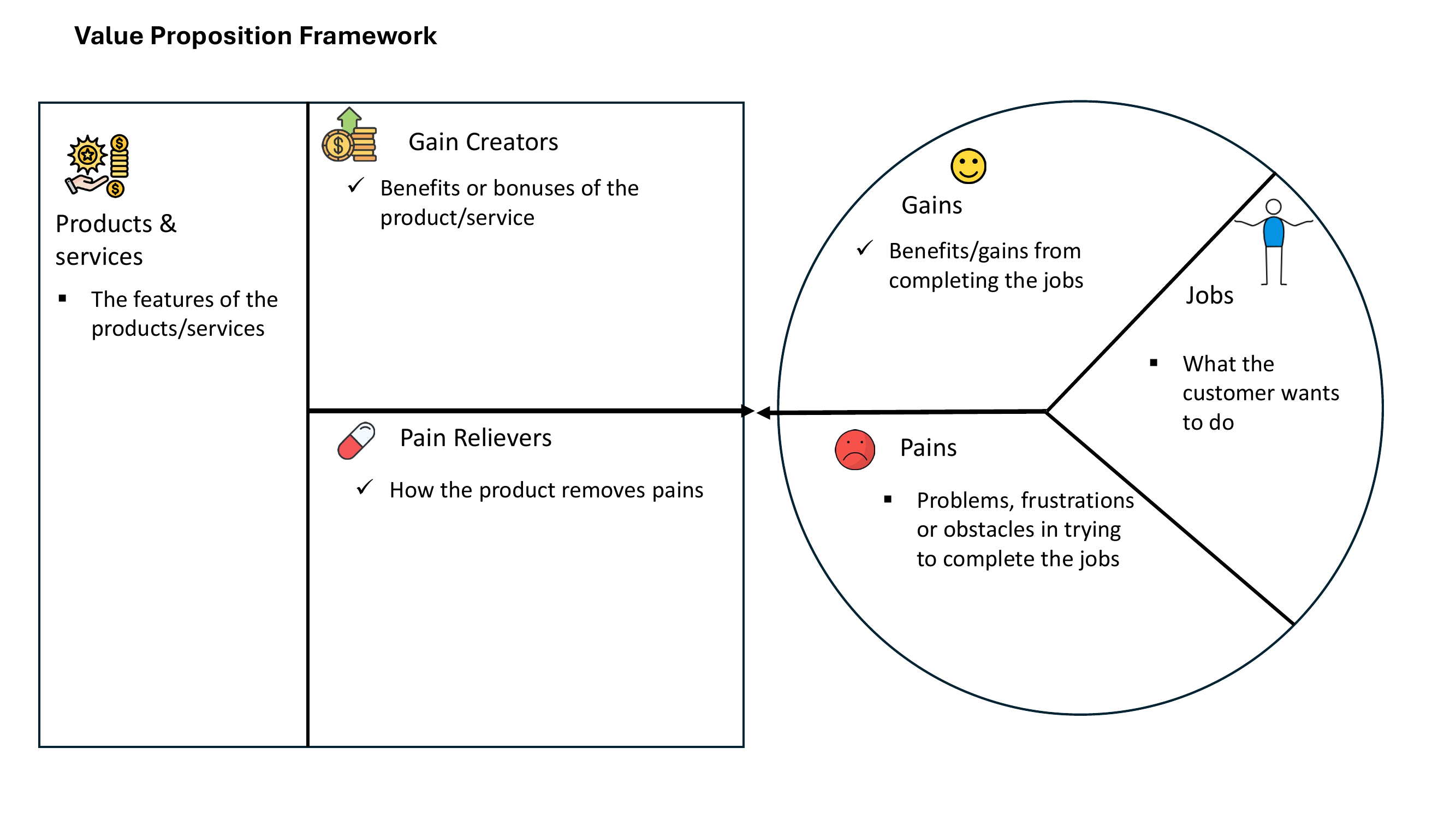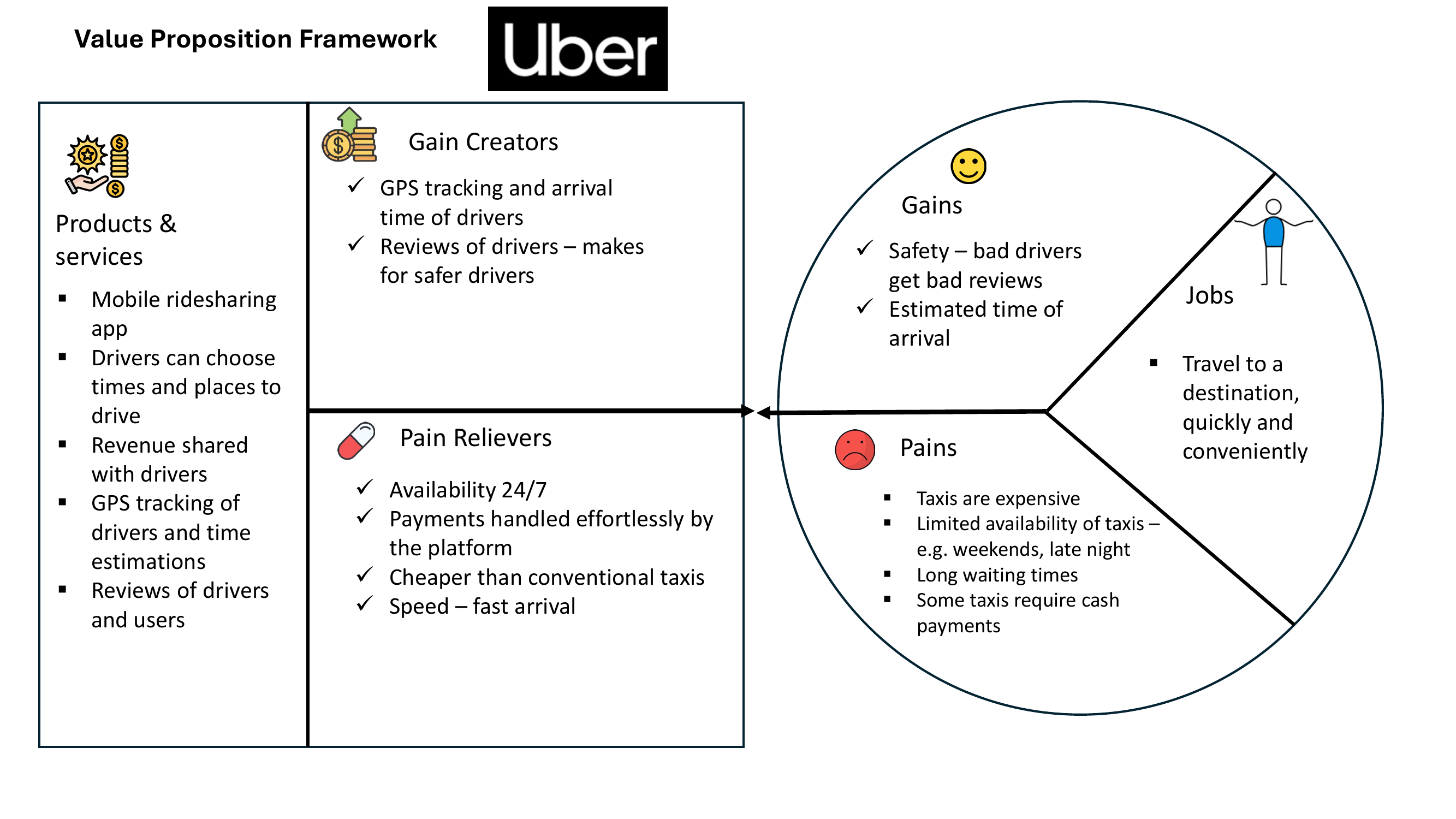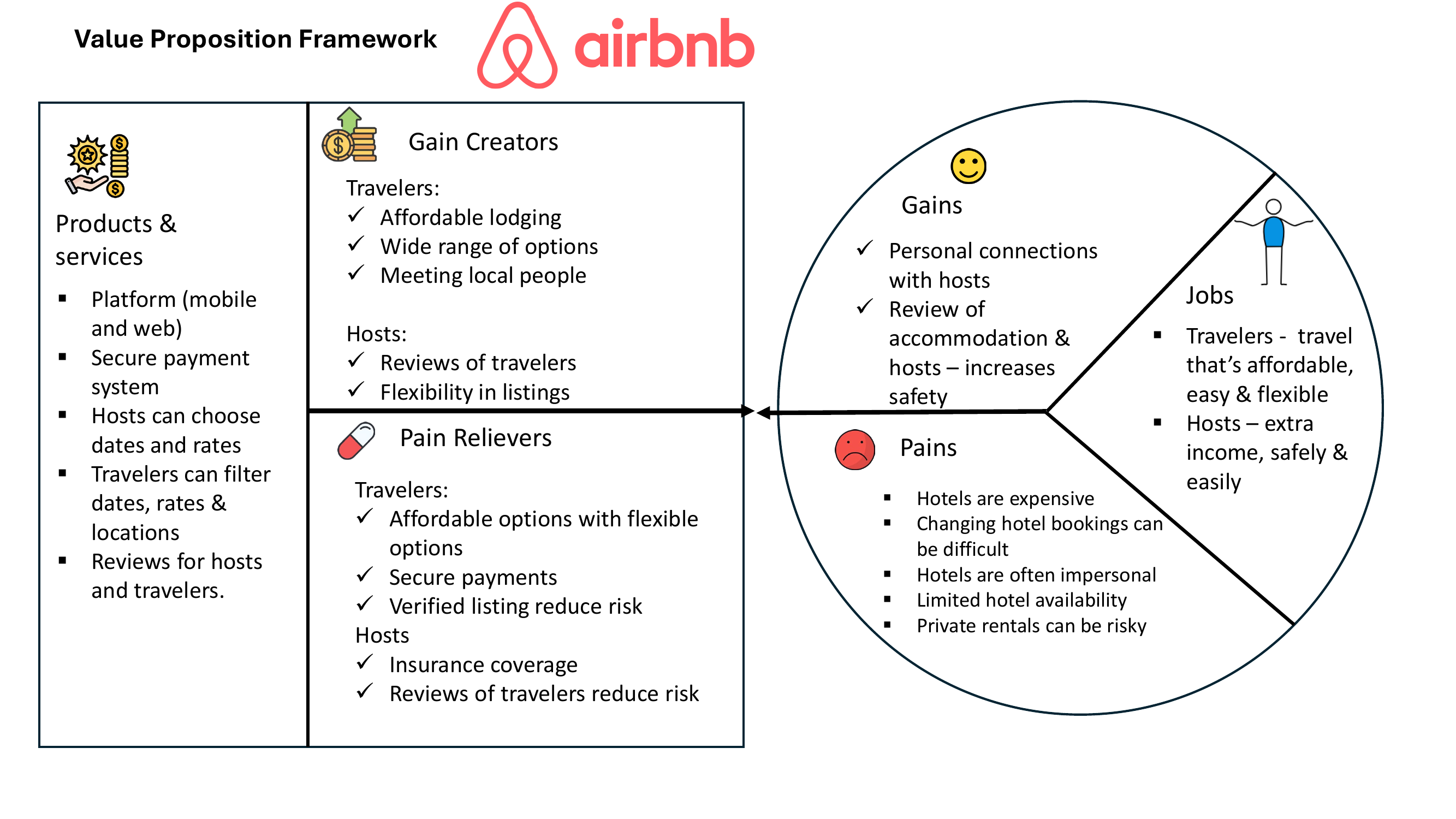
The Value Proposition Framework was developed by Alexander Osterwalder in the early 2000s.
The Value Proposition Framework distinguishes between Features and Benefits.
A product's features are the technical aspects - what the product does and how it functions.
Benefits are the user's experience - problems that havebee solved or pain that is reduced.
🧩 Jobs to Be Done: These are the tasks, problems, or goals that your customer is trying to accomplish. They can be functional (e.g., booking a room) or emotional (e.g., feeling safe).
😣 Pain Points: These are the negative experiences, risks, or obstacles your customer faces while trying to get a job done. This includes frustrations, inefficiencies, or anything they want to avoid.
💊 Pain Relievers: These are how your product or service reduces or eliminates the customer’s pains.
🎉 Gains: These are the benefits or positive outcomes for your customer. Gains can be functional, emotional, or social improvements that add value to their experience.
📦 Features (Products & Services): These are the core offerings of your product or service. They form the foundation of your value proposition and enable the pain relievers and gain creators.

| 📌 Section | 💬 Description |
|---|---|
| 🎯 Jobs to Be Done | Travel to a destination, quickly and conveniently |
| 😣 Pains |
🚕 Taxis are expensive 🕒 Limited availability of taxis – e.g. weekends, late night ⏳ Long waiting times 💵 Some taxis require cash payments |
| 💊 Pain Relievers |
🕐 GPS tracking and arrival time of drivers ⭐ Reviews of drivers – makes for safer drivers |
| 🎉 Gains |
📱 Availability 24/7 💳 Payments handled effortlessly by the platform 💰 Cheaper than conventional taxis ⚡ Speed – fast arrival 🔒 Safety – bad drivers get bad reviews ⌛ Estimated time of arrival |
| 📦 Products & Services |
📲 Mobile ridesharing app 🚗 Drivers can choose times and places to drive 💸 Revenue shared with drivers 🗺️ GPS tracking of drivers and time estimations 🌟 Reviews of drivers and users |

| 📌 Section | 💬 Description |
|---|---|
| 🎯 Jobs to Be Done |
👥 Travelers: Travel that’s affordable, easy & flexible 💼 Hosts: Earn extra income, safely & easily |
| 😣 Pains |
🏨 Hotels are expensive 🔁 Changing hotel bookings can be difficult 😐 Hotels are often impersonal 📉 Limited hotel availability ⚠️ Private rentals can be risky |
| 💊 Pain Relievers |
🧾 Travelers: Affordable options with flexible terms, secure payments, verified listings 🛡️ Hosts: Insurance coverage, guest reviews for safety |
| 🎉 Gains |
🧳 Travelers: Personal connections with hosts, reviews increase safety 🌍 Hosts: Reviews of travelers, flexibility in listings |
| 📦 Products & Services |
📱 Platform (mobile and web) 💳 Secure payment system 🗓️ Hosts can choose dates and rates 🔍 Travelers can filter by date, rate, and location 🌟 Reviews for hosts and travelers |

| 🧭 Step | 📋 Action |
|---|---|
| 🔍 1. Identify Customer Segment | Define your target customer group e.g. travelers, business users, parents.Focus on one well-defined profile |
| 🧩 2. Describe Jobs to Be Done | List what the customer is trying to get done (tasks, problems, or needs) |
| ⚠️ 3. List Customer Pains | Identify frustrations, obstacles, or risks they face while doing the job |
| 🎁 4. List Customer Gains | Note benefits they expect, desire, or would be surprised by |
| 📦 5. Outline Products & Services | List your product's features that support the customer’s goals |
| 💊 6. Add Pain Relievers | Explain how your product reduces or removes specific pains |
| 🎉 7. Add Gain Creators | Highlight how your product has benefits beyond solving problemsenhances experience |